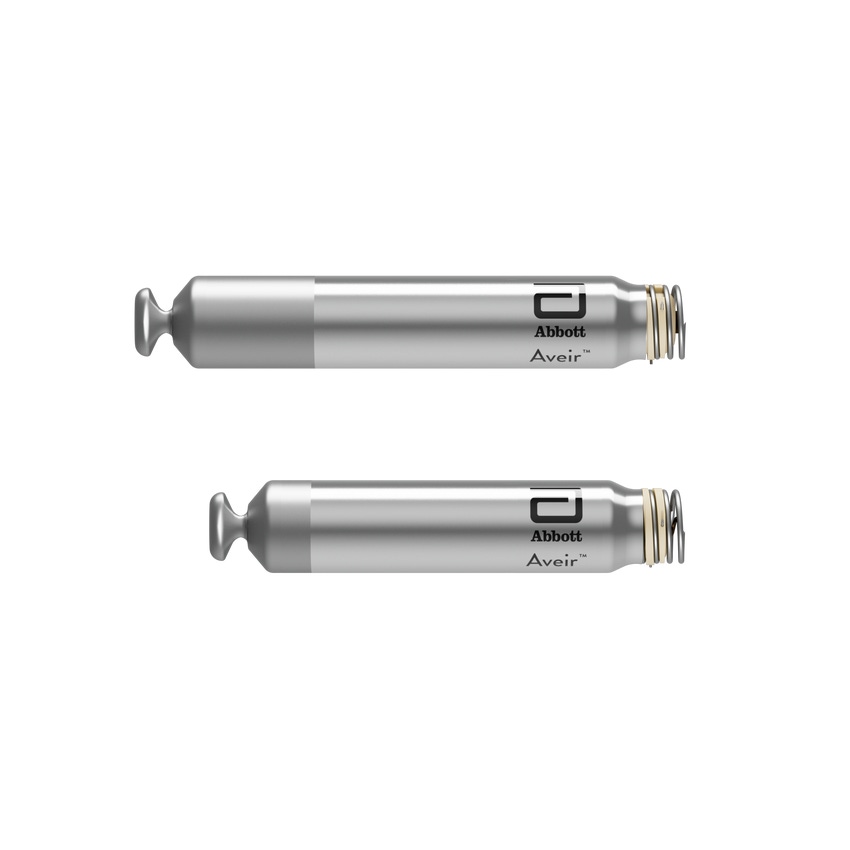A Significant Moment in Time For Pacemakers
Abbott Laboratories won a nod from FDA for the Aveir DR, a dual-chamber leadless pacemaker. Will this approval move the needle for innovation in the pacemaker space?
July 5, 2023

Abbott Laboratories is pushing the envelope with its pacemaker program. The Abbott, IL-based company has nabbed approval for what it is calling the first dual chamber leadless pacemaker.
The Aveir dual chamber leadless pacemaker system is smaller than a AAA battery and is a game-changer for pacemakers said Vish Charan.
“This is a significant moment in time for Abbott,” Charan, divisional vice president of product development at Abbott's cardiac rhythm management business, told MD+DI. “These two lead pacemakers can now communicate beat-by-beat to each other to ensure they are in sync with each other. There’s no other device in the world that provides therapy to both the right atrium and the right ventricle that you can sense and pace the heart directly.”
The Aveir DR leadless pacing system is made up of two devices – the previously-approved Aveir VR single chamber device, which paces the right ventricle, and the now-approved Aveir AR single chamber device, which paces the right atrium. The Aveir DR system incorporates Abbott's novel i2i technology, which solves a significant engineering challenge by offering beat-to-beat communication between the two leadless pacemakers.
Unlike traditional pacemakers, leadless devices are implanted directly into the heart through a minimally invasive procedure and eliminate the need for cardiac leads. As a result, leadless pacemakers reduce people's exposure to potential lead and infection-related complications and offer a less restrictive and shorter recovery period post-implantation.
FDA approval of the Aveir DR dual chamber leadless pacemaker system comes on the heels of recent late-breaking clinical data published in The New England Journal of Medicine showing that Aveir DR system met its three prespecified primary endpoints for safety and efficacy. Results from the Aveir DR i2i IDE study through three-months post-implant showed a 98.3% implant success rate for physicians and more than 97% of people had a successful atrio-ventricular synchrony, so that the upper and lower chamber were beating normally, despite different types of underlying slow heart rhythms.
"Leadless pacemakers have been limited to a single chamber device because seamless, wireless synchronization of two pacemakers has been an insurmountable engineering challenge - until now," said Randel Woodgrift, senior vice president of Abbott's cardiac rhythm management business. "Our team of dedicated scientists and engineers solved one of medtech's complex challenges in treating abnormal heart rhythms with the AVEIR pacemaker, a tiny device packed with powerful technology."
Plans call for Abbott to try and obtain reimbursement for the technology and for CE mark.
“We look to get [reimbursement approval] in 4Q23, Charan said. “We’ll be ready to start rolling it out to the U.S. market in 4Q23. We’re looking to get CE mark in mid-2024 and these are two big geographies U.S. and Europe. We have other geographies like Canada, Japan, and China that will come in due [time.]”
The approval could be a needle mover for pacemakers, much like FDA’s approval of Medtronic’s Micra Leadless pacemaker in 2016. The Dublin-based company touted the Micra as the smallest pacemaker and the first technology in the U.S. that does not require wired leads to provide an electrical connection between the pulse-generating device and the heart.
Medtronic developed the device in-house over seven years.
About the Author(s)
You May Also Like



.png?width=300&auto=webp&quality=80&disable=upscale)
